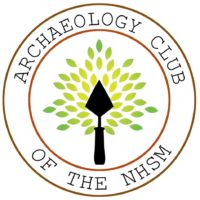NHSM Archaeology Cub members are invited to tour the SERC archaeology lab, 645 Contees Wharf Rd, Edgewater, MD 21037. Dr. Jim Gibb, the lead archaeologist, will talk about all the projects and activities going on there. Afterwards, we’ll drive up to the Java Farm ruins for a look around, followed by a picnic lunch (bring your own lunch). Finally, we’ll drive up to the Woodlawn House, where Dr. Gibb will give a talk about archaeology and cemeteries. Afterwards, you can leave or stay and walk around the trails at the site.
This event is free, but you must be a current member of the NHSM Arch Club to attend.
Accessibility: All the sites on this tour are wheelchair accessible.
About SERC: In 1962, a southern Maryland dairy farmer named Mr. Robert Lee Forrest died. In his will, he bequeathed his 368-acre Java dairy farm and other holdings on the Rhode River in southern Anne Arundel County, Md., to the Smithsonian Institution. Initial discussions entertained the idea of selling the property to add to the Smithsonian’s endowment. But the new incoming secretary, S. Dillon Ripley, persuaded the Institution to consider holding onto it and exploring the property’s potential.
It quickly became apparent that the Java farm and surrounding area provided a wide variety of habitats for terrestrial, wetland, and estuarine field biology and ecology. The center was officially established in 1965 as the Chesapeake Bay Center for Field Biology. The Chesapeake Bay Center for Field Biology also changed its name in 1970 and became the Chesapeake Bay Center for Environmental Studies (CBCES). By that time, a botanical survey had been made of the site, the watershed had been mapped, and various forms of weather data had been collected. Meanwhile, and acquisition continued at a rapid pace. By the mid-1970s, the Smithsonian owned 1800 acres of property, allowing it to conceive of the goal of owning or protecting most of the undeveloped waterfront and near-waterfront lands on the Rhode River. In 1985, the Chesapeake Bay Environmental Research Center was renamed the Smithsonian Environmental Research Center (SERC). Today SERC encompasses 2,650 acres of land. It is home to a diverse staff of senior scientists and supports an interdisciplinary team of more than 180 researchers, technicians, and students carrying out their work at SERC and at field stations from Alaska to Antarctica, and from Belize to Australia.
The Natural History Society of Maryland’s Archaeology Club promotes the value of archaeology in Baltimore City, Baltimore County, and surrounding areas. The goal of the Archaeology Club is to educate citizenry in the ethics, methods, and artifact preservation methods of archaeology and how archaeology can be used to document, discover, and promote local history. The Archaeology Club is inclusive to all persons who have an interest in archaeology.
If you are an archaeology enthusiast, please consider joining us. You must be a member of NHSM to join any of its clubs. Follow this link to learn more: https://www.marylandnature.org/club-membership/
The Natural History Society of Maryland is a volunteer-led non-profit organization, so the fee you pay will go directly to support the programs, the nature collections, and the building that make this kind of nature education possible.






